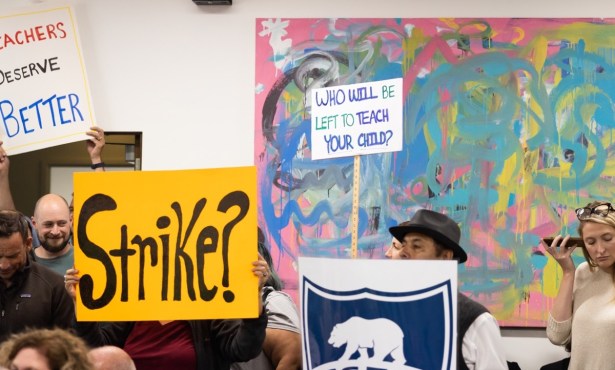Discipline Policy Reboot
S.B. Schools Move Toward Restorative Justice Program

In a special hearing late Tuesday afternoon, the Santa Barbara Unified School District Board officially got word that, when it comes to being expelled or suspended, or just plain skipping school, Latino students are at least twice as likely as their “white” counterparts to run into trouble. The news was the punch line, albeit an anticipated one, in a long-awaited district report on student discipline, itself the opening salvo to a larger and more significant effort led by new Superintendent David Cash to revamp the district’s discipline policies and potentially implement a restorative-justice program for kids who run afoul of certain school rules.
In fact, after more than two hours of discussing discipline, the details of who gets punished and why, and the ups and downs of restorative-justice techniques already in use at other districts with similar demographics, the board gave full support to Cash and set the stage to have a restorative-justice–based pilot program in place at one of S.B.’s junior high schools by the start of next school year. “The data we see suggests a definite lack of student engagement,” explained Cash, later adding, “We really need to do some important things, and we need to do them quickly, very quickly.”
After crunching numbers from the past three school years, the district found that when it comes to overall suspension numbers (i.e., combining students from elementary, junior high, and high schools, and adjusting ratios based on enrollment figures), Latino males were approximately three times as likely to be suspended than white males, and Latina females were roughly six times more likely to be suspended than white females. Overall expulsion numbers showed a ratio of two male Latino students kicked out for every one white male, and upward of four female Latinas getting the boot for every white female student.
The primary reason for expulsion for boys, at 31 percent, was an infraction related to controlled substances, while the number-one reason for suspension was disruptive or defiant behavior. On the female side of things, the overwhelming reason for expulsion and suspension was controlled substances. The report, which was compiled by Robin Sawaske, district associate superintendent, and Davis Hayden, director of research and evaluation, also revealed that when it comes to skipping school (something that happened 19,439 times last year at high schools alone), Latinos are roughly twice as likely to ditch.
Presented with the data, boardmembers all expressed their dismay, though none seemed too surprised. As Boardmember Annette Cordero put it, “We have now seen a lot of data that simply tells us what we already knew. … The real issue is why is this disparity occurring and what can we do about it? We need to look at what is happening and, perhaps, what is not happening [at the campus level].” After discussing this for a while and essentially ruling out institutionalized racism, the board identified certain contributing factors behind the numbers, like nonuniform truancy reporting protocols for schools, and the various “subjective” elements of the district’s current student discipline policies versus the “objective” ones. It was the latter that seemed to be a major point of concern for many of the boardmembers, as well as Superintendent Cash.
“Because our policies are loose [in the guidance they give to teachers], I think we have more subjectivity, and that’s a big problem. We need to minimize that and maximize the objectivity.” — Boardmember Monique Limón
With the district’s discipline matrix (which identifies various student infractions and outlines the appropriate response by teachers and administrators, such as send the student to the principal or call the cops) as evidence, Boardmember Monique Limón, who was touting the benefits of restorative justice during her race for the School Board two years ago, opined, “Because our policies are loose [in the guidance they give to teachers], I think we have more subjectivity, and that’s a big problem. We need to minimize that and maximize the objectivity.”
To that end, it seems that restorative justice — which essentially gives offending students an opportunity to repair the damage they might have caused by enrolling in counseling or some such rehabilitative effort that works to address the underlying cause of their misbehavior — could be quite helpful, or at least that is what Cash and the boardmembers are hoping for. Pointing to the program currently in place in the Denver Unified School District as a model, Cash made a pitch to the boardmembers to let him, with the help of teachers and students alike, flesh out in the coming months via a public workshop or two what exactly a similar restorative justice effort would look like here in Santa Barbara. If done right, Cash argued, such a program would not only work to reduce suspension/expulsion rates but would also improve overall campus culture and even help close achievement gaps. “It takes time, but when it happens, it is real change,” said Cash.
The efforts, however, would not be easy, acknowledged the superintendent, and they would certainly meet “significant resistance” both from within and outside the school community by folks who may not be up for overhauling the way the schools respond to kids who break fundamental rules or who see such restorative-justice efforts as being soft on crime. “The most important part is our teachers,” explained Cash. “They have to be interested and willing to make transformative changes in how they relate to their students.”
If all goes according to plan, Cash hopes to be back to the board by late February with the specific terms of a pilot program.



